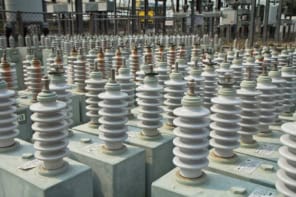
As new technologies trying to compete with well-established technologies, renewables needed some interim help. In a new book, Renewable Energy in the UK: Past, Present and Future, I look at how that has been done.
What stands out is that, whereas some countries have gone for direct aid or guaranteed price feed-in tariff systems, succeeding UK governments have mostly decided that market-price competition should be the main driver of renewable development. Although wider targets have sometimes been set, the financial support mechanisms have had a strong market competition element, with varying degrees of success:
- Non-Fossil Fuel Obligation (1990–1998)
Introduced by Margaret Thatcher’s administration, the NFFO involved competitive auctions for renewable capacity based on price, within an overall capacity target set by the government. Companies could pass the extra cost of meeting the obligation targets to consumers.
The NFFO was, arguably, not very successful. Although costs were kept down, this was at the expense of capacity. Some very low bids won contracts but the developers were sometimes unable to deliver and the projects did not go ahead.
- Renewables Obligation (1999–2017)
The RO replaced the NFFO system under the subsequent Labour administration, with overall capacity targets set and Renewables Obligation Certificates (ROCs) allocated to companies meeting them. Companies that managed to get more than was needed to meet their targets could sell ROCs to companies that could not get enough, so ROCs had value and a market for them emerged.
There were some problems. ROC prices varied unpredictably so, with their future cash flows uncertain, developers found it hard to obtain finance for new projects. The extra cost from the higher interest rates charged by lenders had to be passed on to consumers. Capacity growth suffered and the costs passed on to consumers rose. Despite some modifications, problems persisted although it did lead to some capacity growth
- Contracts for Difference (2016–)
Introduced by the Conservative-Lib Dem Coalition government, the CfD system has competitive project auctions based on price, with contract strike prices agreed but subject to adjustment up or down to reflect project success and market changes. It is otherwise much like the NFFO, but with penalties for failure to deliver and tight overall cost caps set to limit the cost pass-through to consumers. That limits the overall level of capacity likely to go forward. The CfD was also meant to cover nuclear and carbon capture and storage (CCS), as well as renewables, which some saw as odd — they were all very different and at different stages of development, as were some of the renewables. Could one system cover all of them?
This hybrid market-intervention variable price system has had mixed results so far. The government has subdivided the auction process into separate technology groups, each with different outline capacity targets, price levels and caps, with some technologies – large PV and onshore wind — deemed to no longer need it and excluded from access. The Hinkley nuclear project was given a CfD contract but was not required to go through the competitive tendering process. CCS has not yet been supported.
- Feed-in tariffs (FiTs)
The UK approach can be compared with that adopted in most of the rest of the EU, which has used guaranteed price FiTs. Projects are given fixed prices for power fed into the system, although the price levels fall over time to take account of likely improvements and market changes. The cost is passed on to consumers. After a long period of opposition to FiTs, the UK eventually adopted a small FiT scheme in 2010, but saw it as being marginal — the RO and then the CfD were to be the main support mechanisms.
FiTs have been very successful at getting capacity up and project costs down. For example, in Germany they helped to stimulate the rapid expansion of wind energy without high cost to consumers. Despite Germany’s wind regime being much less attractive than that in the UK, it managed to install 20 GW of wind plant by the end of 2006. The German FiT cost consumers 2.6 pence/kilowatt hour, compared to 3.2 p/kWh in 2005/6 under the UK’s RO system, which by this time had only led to under 2 GW of wind capacity being installed. Subsequently, the FiT system also helped to support the rapid expansion of PV solar in Germany and elsewhere, although its initial high cost did pass through higher charges to consumers.
- Renewable Heat Incentive (RHI)
For completeness, mention should also be made of the support system introduced in the UK for renewable heat, covering biomass, solar and other green heat sources: the Renewable Heat Incentive (RHI). Unlike the renewables electricity support schemes, this is not based on a market mechanism but on the grant aiding of selected projects, although with competitive tests for eligibility. This makes it both simpler to administer, with no direct attempt made to measure actual heat supplied, but also more open to abuse, depending on how the eligibility and “deemed supply” rules are framed and operated, as was evidently found in the case in Northern Ireland with its version of the RHI.
If the aim is to expand renewables overall, and to do so rapidly, then continued support for the new technologies like wave and tidal power would be wise
Dave Elliott
Markets win out
The above short history of support schemes for renewable electricity and heat projects in the UK and EU can perhaps be taken to reflect an ideological conflict between those who support free market competition and those who prefer government intervention, although some of the schemes involve both elements.
What’s more, in all cases, market pressures have had an impact. With increasing economic constraints in the 2010s and a rapid fall in PV costs, cutbacks in FiT levels were imposed across the EU and there has been a move away from FiTs to contract auctions like the UK CfD. It remains to be seen whether this will lead to consumer cost reductions or simply to capacity growth reduction. Auctions have led to some very low bids winning contracts around the world, although it is not clear if these low prices are realistic and will lead to viable projects going ahead. As with the UK NFFO, some may have bid too low and won’t be able to deliver in practice.

Earth, water, wind and Sun: a history of renewable energy in the UK
What happens next? For good or ill, FiTs are on the way out across the EU and in the UK. Some see that as a mistake. It could be argued that FiTs did well in building capacity, with 42 GW of PV and 50 GW of wind in Germany by 2017, which in turn helped reduce technology prices, now at an all-time low. Although, with initially high-cost PV solar, this was at the expense of consumers. The UK’s small FiT scheme for microgeneration, mainly via PV solar, was heavily oversubscribed, leading to cutbacks in FiT support levels, given the overall cap on support. However, buttressed by support — until recently — for larger PV projects under the RO, by 2017 PV overall had moved up to over 12 GW in the UK. But, with costs falling, it was decided to close the FiT to new projects from April 2019.
However, it’s not just FiTs that are being cut. In parallel, no further new allocations under the CfD will be allowed, after one last round of auctions. Otherwise, all new spending on the various green levies is frozen until after 2025. The expectation seems to be that renewables like onshore wind and PV, and soon offshore wind, should be increasingly able to stand on their own feet without subsidies.
Cut all subsidies?
So why provide support for renewables any more? Subsidies were useful: project prices have fallen faster than they would have without the support systems. But now, in theory, the winners can move ahead without subsidies. That is debatable — they still need access to the market that the CfD provides. What’s more, what of the newer less-developed options? If the aim is to expand renewables overall, and to do so rapidly, then continued support for the new technologies like wave and tidal power would be wise, to reduce their costs. Unless, that is, you believe we should simply stick with the currently lowest-cost options — and that wave and tidal have missed the boat. I will look at wave power in my next post; it does seem to be moving forward very slowly.
Nevertheless, while short-termism has its appeal so does diversity, spreading risk across a wider range of options. New or improved technologies continue to emerge. They too may become cheap, as PV and wind have done. However, as my new book illustrates, forecasting likely “best bets” and making choices between options is hard. Indeed, some say it’s almost impossible to do rationally and that mostly we default to (or consciously welcome!) belief-based decision-making.



